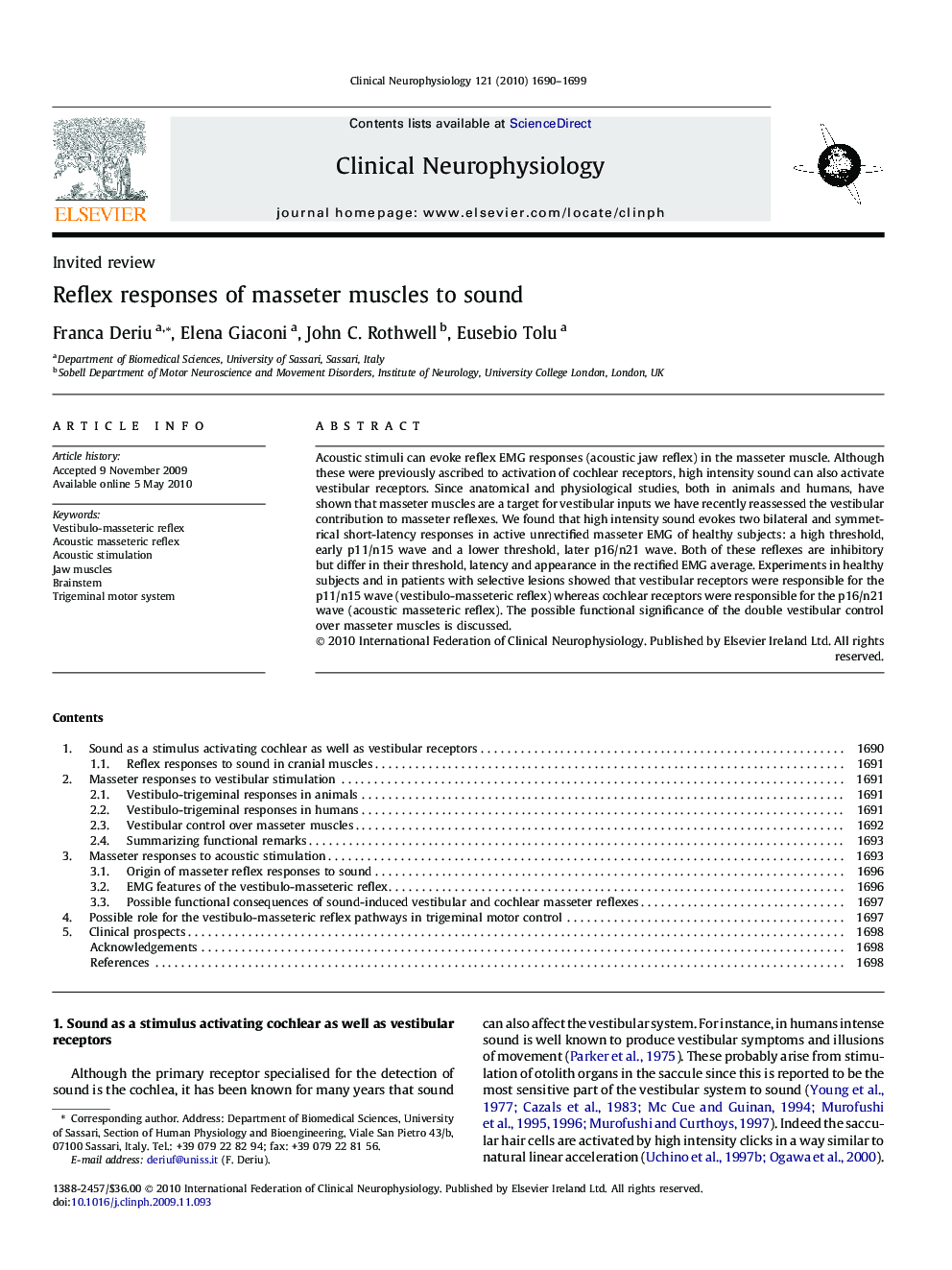| Article ID | Journal | Published Year | Pages | File Type |
|---|---|---|---|---|
| 3045117 | Clinical Neurophysiology | 2010 | 10 Pages |
Acoustic stimuli can evoke reflex EMG responses (acoustic jaw reflex) in the masseter muscle. Although these were previously ascribed to activation of cochlear receptors, high intensity sound can also activate vestibular receptors. Since anatomical and physiological studies, both in animals and humans, have shown that masseter muscles are a target for vestibular inputs we have recently reassessed the vestibular contribution to masseter reflexes. We found that high intensity sound evokes two bilateral and symmetrical short-latency responses in active unrectified masseter EMG of healthy subjects: a high threshold, early p11/n15 wave and a lower threshold, later p16/n21 wave. Both of these reflexes are inhibitory but differ in their threshold, latency and appearance in the rectified EMG average. Experiments in healthy subjects and in patients with selective lesions showed that vestibular receptors were responsible for the p11/n15 wave (vestibulo-masseteric reflex) whereas cochlear receptors were responsible for the p16/n21 wave (acoustic masseteric reflex). The possible functional significance of the double vestibular control over masseter muscles is discussed.
